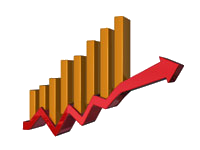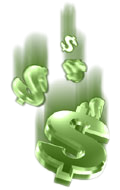-

- Solutions
- Corporate Services
- The Quest Team provides a broad base of proven products and services to organizations which require highly effective marketing, results-achieving sales organizations, and productive customer teams.
- In-House Training
- Quest Team in-house training programs are designed to make sure that your marketing, sales and customer support teams have that special edge of differentiation.
- Strategic/Key Account Management
- Our signature in-house training program is designed to make the most of your competitive advantage.
- Corporate Accounts
- Enroll multiple registrants from your company and keep track of each team member's course history.
- Classroom Courses
- On-demand
- Business Modeling
- Financial modeling as a basis for management decision and action
- Whether you are an entrepreneur or an "intra-preneur", if your role involves strategic planning, you will profit from being able to see the financial implications of your ideas.
- How to Read and Understand Financial Statements
- Understanding the concepts and language of financial reporting
- Whether you are an executive, manager or professional, you may need to evaluate a customer, plan new projects or policies, or simply deal with the financial aspects of your role. To be effective you'll want to be able to use the language of accounting.
- Pricing and Costing
- The art and science of pricing and costing
- To successfully manage a business, you must understand where your product costs actually come from. This course is designed to help you think about the alternatives you have in setting prices.
- Making the Microchip
- Making the Microchip - At the Limits III is an overview of the semiconductor processing industry. This video course provides a comprehensive view of the complex manufacturing steps using non-technical terminology and analogies.
- Knowledge
- Quest Team Articles
- Dozens of in-depth articles covering essential topics, all available here free of charge.
- The Expert's Panel
- Gain a deep understanding of important aspects of corporate-level complex sales, product marketing, and other information about technology industries from our panel of seasoned experts.
- Q and A Archive
- An archive of challenging questions and their answers
- Company
- Sign in
Usage-Based Pricing: Trap or Treasure Trove for Equipment Vendors?
by Joe Verderber
It is no secret. Semiconductor manufacturers would like to convert "fixed" manufacturing costs to true variable costs dependent solely on how many wafers, or better yet, dies they process.
 The more they can arrange that, the less risk they have. What risk? For one, the risk of mis- estimating volume for costing purposes, and therefore facing the possibility of unfavorable standard cost variances that reduce gross margin during tough times when they can least afford it. For another, the risk of not being able to drive unit costs down each year. And or course the risks associated with using cash for investment in capital equipment for production when that is absolutely not necessary.
The more they can arrange that, the less risk they have. What risk? For one, the risk of mis- estimating volume for costing purposes, and therefore facing the possibility of unfavorable standard cost variances that reduce gross margin during tough times when they can least afford it. For another, the risk of not being able to drive unit costs down each year. And or course the risks associated with using cash for investment in capital equipment for production when that is absolutely not necessary.There is a way that you, as an equipment supplier, could give them what they've been looking for and also position yourself for improvement in market share and increased predictability in earnings. I'm not talking about equipment leasing here. While leasing rather than purchasing equipment does reduce a company's initial cash outlay that does nothing for its fixed costs. It simply replaces the fixed cost called "depreciation" by the fixed cost of a lease payment.
In its simplest form, I'm suggesting that you as an equipment vendor consider making equipment available to semiconductor manufacturers on the basis of a usage fee charged per die (or wafer) processed, and reduce that fee by a predetermined amount each year that the equipment is kept in production.
Usage-based equipment pricing has real value for customers.

The selling proposition of providing that capital equipment on the basis of usage-based pricing rather than outright sale has real value for your customers. Your challenge is to monetize that value and properly capture it in your pricing. With a little work, you can reasonably estimate your customer's likely cost per unit processed on your equipment by learning what depreciation schedule they use for capital gear, adding what you know about annual maintenance cost and up-time, and factoring in throughput rate. That will be the foundation of your per-unit pricing. You'll be proposing pricing which is some factor greater than one times that cost. How much greater than one is the big question. Establishing the value of per-unit pricing will require estimates, or let's call them "guesses" on your part. Whether the resultant business will make financial sense for your company is something that you can readily check out with a fairly simple financial model of your business.
Usage-based pricing rather than outright sales could smooth your business.
In modeling such a business, you really should consider several years, rather than just one or two. It is classic that people bemoan the year-to-year fluctuations in the semiconductor business. The "lumpiness" of the semiconductor equipment business is even more severe. Usage-fee based pricing might be the cure you're looking for to insulate your company's profitability from the large year-to-year swings. It has often been demonstrated that under the right conditions, offering equipment on a per-use fee basis can provide significant smoothing and increased predictability for a revenue stream compared to outright sale of equipment.

Prime historical examples are the postage meters of Pitney-Bowes or Frieden and the copiers of Xerox. To find out if it will work for you, you don't have to put your company on the line. You can build a financial model of the business with a spreadsheet program. You can actually set it up as two parallel models, one for sales only and one for usage-based revenue. Then you can back-test the model by plugging in your placement data and costs for the past few years and assuming that you would have placed only the same number of systems if you had been offering usage-based pricing. Then you can compare the two, looking at revenue, profit, cash flow and the like. You can do it again with historical industry data, or with market research forecasts, or with just plain guesses. If you structure the spreadsheet model correctly, you can quickly determine whether this could conceivably make any sense for your business or not.
No free lunch: It takes cash to do this.

If you opt to offer your equipment on a usage fee basis rather than outright sale, you'll have to face up to the requirement for a substantial buildup of cash use by your business. Your "cost of goods" for your revenue will not be the cost of building the equipment you place with customers. Rather, it will be the depreciation you claim on that equipment. You'll continue to own the equipment, and it will mean a significant buildup of assets on your balance sheet. By the way, the asset value on which you base your depreciation will be your cost of building the equipment rather than its nominal selling price. Why? Because it is a basic principle of accounting that assets must be valued at the lower of cost or market.
Properly constructing the model, you can check to see, for example, what the impact on cash flow will be from the fact that you can probably expect your accounts receivable Days Sales Outstanding (DSO) to be much better in the usage-fee case with monthly billings than with the customarily longer collection cycles for equipment sales. You'll want to experiment with accelerated versus straight-line depreciation in the model too. You'll see what a large impact that will have on the taxes you'll actually pay and therefore on the time required to reach positive cash flow.
How differentiated is your product offering?

If you think that this might have possibilities for your business, stop and also consider what impact this might have on your market share. Everyone wants their product offering to be differentiated from those of the competitors. Usage-based pricing could be a differentiating factor for you. Think about it. And if you want to give it more than just a passing thought, there is an on-demand course on financial modeling here at Quest Team that you ought to look into.
Economical, On-Demand Course: Business Modeling

Check out our Business Modeling, On-Demand course which contains further information on this subject AND a fully functional Excel template to evaluate Usage-Based Pricing.
Boot Camp Half-Day Course: Business Modeling
An Outstanding Learning Opportunity

The course is designed to enable you as a non-accountant to build a usable financial model of a business. You'll use that model to determine and analyze proposed changes in the business, and to have a basis for selection among alternative strategies. You'll concentrate on the process and logic of modeling rather than on the numbers by which the model is expressed.
 www.questteam.com copyright © 1999 – 2025 all rights reserved (c)
www.questteam.com copyright © 1999 – 2025 all rights reserved (c)